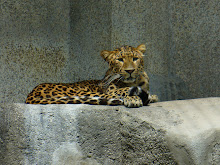Welcome
(back) to Weirdbeautiful.
Quote-of-the-week this week is somewhat longer than
usual:-
“ One of the sad memories of my life is a visit to
the celebrated mathematician and inventor, Mr Babbage....He took me through his
work rooms.
In the first room, I saw parts of the original
calculating machine, which had been shown in an incomplete state many years
before...I asked him about its present form. “I have not finished it because,
in working at it, I came on the idea of my Analytical Machine, which would do
all that it was capable of doing and much more.”
We went into the next work-room, where he showed and
explained to me the oworking of the elements of the Analytical machine...” I
have never completed it”, he said, “because I hit upon an idea of doing the
same thing by a different and far more effective method...”
Then we went into a thirds room...I saw no trace of
any working machine. “It is not constructed yet, but I am working on it and it
will take less time to construct it altogether than it would have taken to
complete the analytical machine.”
I took leave of the old man with a heavy heart; when
he died a few years later, not only had he constructed no machines,
but....everything was too incomplete to be capable of being put to any useful
purpose”.
-
-- - Lord Moulton (John Fletcher Mouton)
-
British Mathematician,
-
(1844-1921)
Source: Inaugral Address to the
Napier Tercentenary Congress, Edinburgh, 1914, printed in Napier Tercentenary
Memorial Volume 1915.
This quotation comes from the “Eccentricity”
exhibition which is currently on in the Museum of The History of Science in
Oxford. "Eccentricity" is an appropriately eccentric exhibition, with a collection of typewriters and moveable type jostling for space with tables for microscope slides and cabinets of hand-painted projector slides.
For details of this and other
exhibitions in Oxford’s Museum of the History of Science, take a look at their
website [here]. Materials from their previous exhibitions are online [here]. The
Museum, which is one of the hidden gems of Oxford, also contains a blackboard used
by Albert Einstein and still covered in equations written in his own hand. Admission to the museum is free.
More information on Lord Moulton is
available online [here] and on Charles Babbage [here].









